Did Jews help the Nazis?
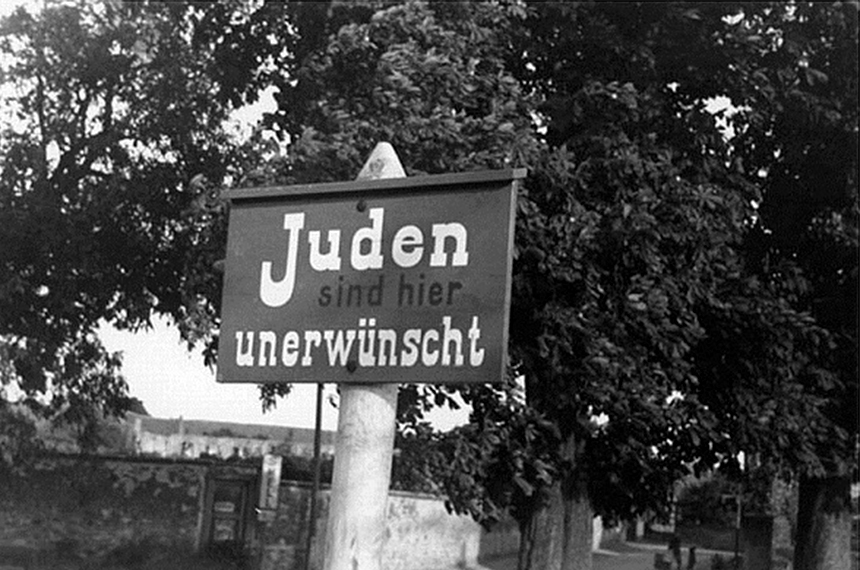
Today it is very difficult to deny the Holocaust, as many eyewitnesses are still alive, and their testimonies are unassailable. The tactics of deniers have therefore changed. They say that the Catastrophe did take place, but it was provoked by the Jews themselves, with whose help the National Socialist German Workers’ Party (NSDAP), headed by Adolf Hitler, came to power. Then they list the Jewish bankers, industrialists, and businessmen who collaborated with the Nazis in exchange for the title of “honorary Aryans,” which guaranteed their personal safety. Then deniers recall the Jews in the Wehrmacht, some of whom held high ranks. They also conclude that since Jews were also henchmen of the Nazis, they only have themselves to blame.
On 15 September 1935, a special session at the Reichstag adopted the Nuremberg Race Laws. One of them banned marriages and sexual relations between Aryans and Jews. Another stated that only Germans can enjoy all civil rights. These were followed on 14 November by a supplementary law defining who was to be considered a Jew; in other words, an individual who was to be deprived of these rights.
In keeping with this law, a person was considered a Jew (regardless of religious affiliation or self-identification) if s/he had at least three Jewish grandmothers/grandfathers. Those who had two such relatives were also considered Jews, but only in “aggravating circumstances” taking the form of membership in the community or the presence of a Jewish husband or wife. Others with this same composition of grandmothers/grandfathers were classified as persons of mixed race (Mischlinge) of the first degree. Second-degree Mischlinge had only one grandfather or grandmother. These individuals retained their German citizenship but were subjected to a whole array of restrictions: acquiring an education; getting married; they were also forbidden to teach, work in government offices, etc.
The status of so-called “honorary Aryan” was introduced for persons of non-Aryan origin who were necessary to the Reich for one reason or another. This status could be claimed not just by Jews or Mischlinge. For example, the Grand Mufti of Jerusalem, Amin al-Husseini, who was an Arab nationalist and the worst enemy of Palestinian Jews, became an “honorary Aryan.” But this status was applied mainly to Jews, as they were too well integrated into German life to be removed all at once without serious consequences. Throughout the years of Nazi rule, a total of 150 people, out of 500,000 Jews in the country, became “honorary Aryans.”
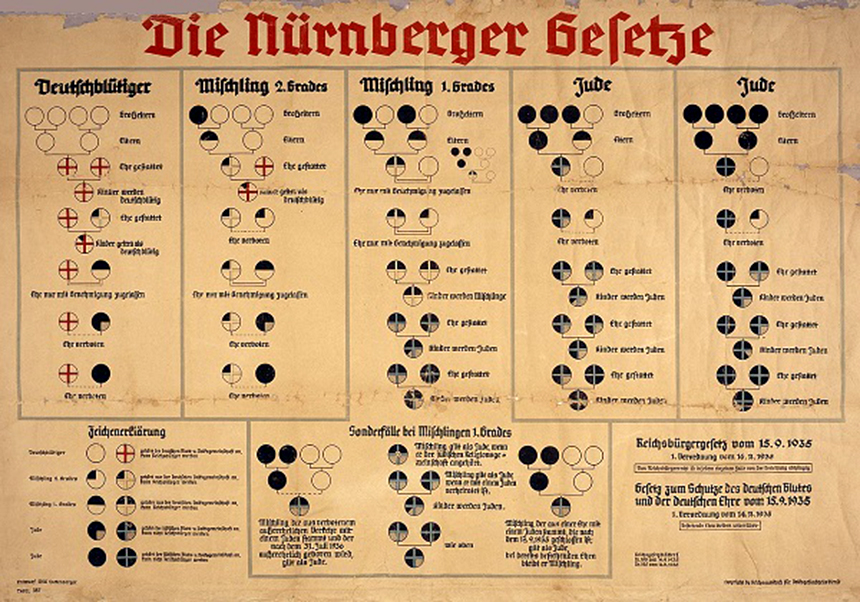
The two most famous “honorary Aryans” were Emil Maurice and Erhard Milch. Emil Maurice (1897–1972), a watchmaker by profession, was one of the first to join the Nazi party. He was Adolf Hitler’s driver and a personal friend since 1919. Maurice the stormtrooper took part in the Beer Hall Putsch in Munich in November 1923 and was arrested and imprisoned together with Hitler in Landsberg Prison. In 1925 he was one of the organizers of SS divisions (membership card no. 2), where he subsequently held high positions.
As is well known, SS members were subjected to stricter requirements for racial purity. They had to prove that no non-Aryans had infiltrated their family trees from the year 1750. But in 1935, it turned out that Emil’s great-grandfather, Karl Maurice Schwarzenberger (1805–1896), was a Jew. The decision handed down by Reichsführer Himmler (holder of membership card no. 168) was unequivocal: There is no place in SS units for people with an admixture of Jewish blood. The Führer had to intercede on behalf of his old friend and even sent Himmler a letter demanding that an exception be made for Maurice and his brothers. Himmler backed down, and the brothers continued to serve in the SS after obtaining the title of “honorary Aryans.” The only question is whether Emil Maurice can be considered a Jew. For the same reason, Pushkin can be considered an Ethiopian, not a Russian. But this does not confuse those who want to see Jews among the founders of the NSDAP.
Erhard Milch (1892–1972) rose to the rank of Field Marshal and was essentially the “father of the Luftwaffe.” As an eighteen-year-old youth, he went to the front, first as a gunner fighting against the Russians. In 1915 he was transferred to the Air Force and fought against the French. By the end of the war, he was in command of squadrons, even though he was not a pilot and had not gone on any combat missions. After the war, he switched to civilian aviation, where he rose to become the manager of Lufthansa. In the late 1920s, he joined the NSDAP, and after the Nazis came to power, he became the deputy of the Minister of Aviation, that is, Hermann Göring. In 1935 persistent rumors began circulating to the effect that Milch’s pharmacist father, Anton, was a Jew. They even reached the ears of Göring, who suspended an investigation that the Gestapo had already started. He found an original solution to the problem. Milch’s mother, Clara, was persuaded to sign an affidavit stating that she was in a secret relationship with an Aryan, Baron Hermann von Birom, and that he was the father of her children, not the Jew Anton Milch. Erhard Milch thus became a full-blooded Aryan, and Göring’s phrase went down in history: “Only I decide who is a Jew in my ministry and who is not!”
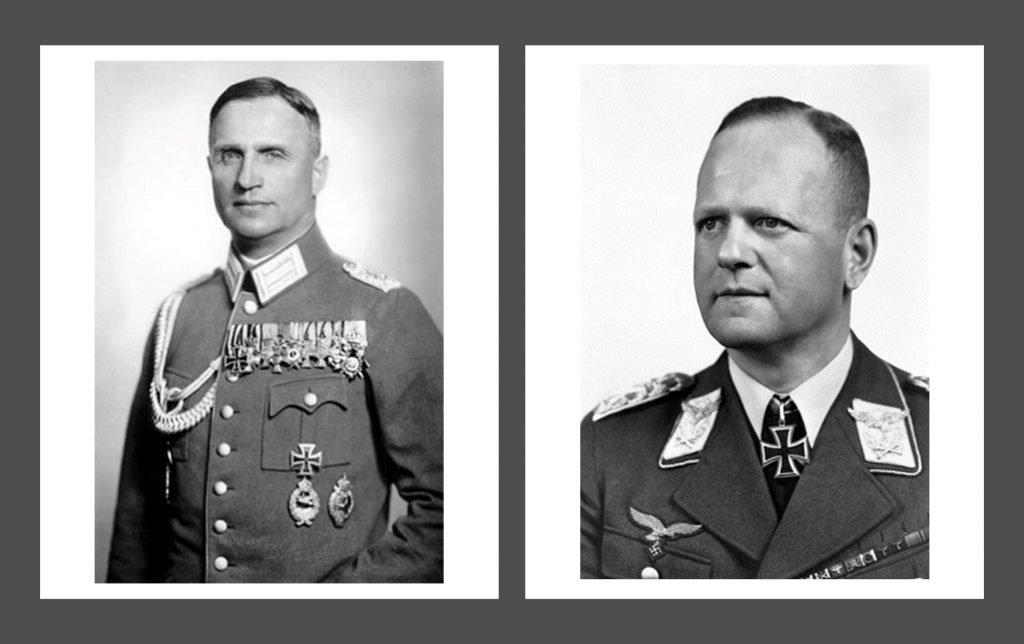
Less well known is the story of Helmuth Wilberg (1880–1941), one of Germany’s first fighter pilots. In 1917–1918 Wilberg had approximately seventy squadrons under his command, and in the 1920s, he was considered the leading theoretician of aviation in the Reichswehr. Göring wanted to appoint Luftwaffe General Wilberg as Chief of Staff of the Air Force, but it was discovered that the pilot’s mother was Jewish. Not willing to lose such a valuable ally, Göring made him his “honorary Aryan,” commissioning him to develop the doctrine of the German Air Force. Wilberg was one of the authors of the Blitzkrieg strategy and took part in the Polish campaign. He died in a plane crash in November 1941.
For all that, there were simply no Jews as such in the Wehrmacht. In accordance with the Nuremberg Laws, they were stripped of their civil rights, and in the 1940s, they were not subject to conscription but to transportation to concentration camps; the exception being individual Mishlinge, that is, a few people with a trace of Jewish blood who occupied a more or less prominent place in the army hierarchy. For example, Colonel Walter Hollaender, recipient of the Knight’s Cross and the gold German Cross, received a certificate of blood purity despite having a Jewish mother. Similarly recognized as an Aryan was Johannes Zukertort, the son of a Jew who rose to the rank of general. Horst Gertner, recipient of the Iron Cross (2nd class), had a Jewish relative.
Admiral Bernhard Rogge, who was one-quarter Jewish, received a certificate of blood purity. In his time, he was awarded the Knight’s Cross with oak leaves and a samurai sword from the emperor of Japan. In March 1945, he was appointed commander of a battleship battle group in the Baltic Sea, and after the war, he took an active part in creating the fleet of the Federal Republic of Germany.
Captain 1st Rank Paul Asher, who was half-Jewish, was the main artillery officer on the German cruiser Admiral Graf Spee, famous for its bold raids in the South Atlantic. After the ship was scuttled, he returned to Germany, where he was assigned to the battleship Bismarck. He died in battle.
Can all this be called mass Jewish participation in the functioning of the Nazi war machine?
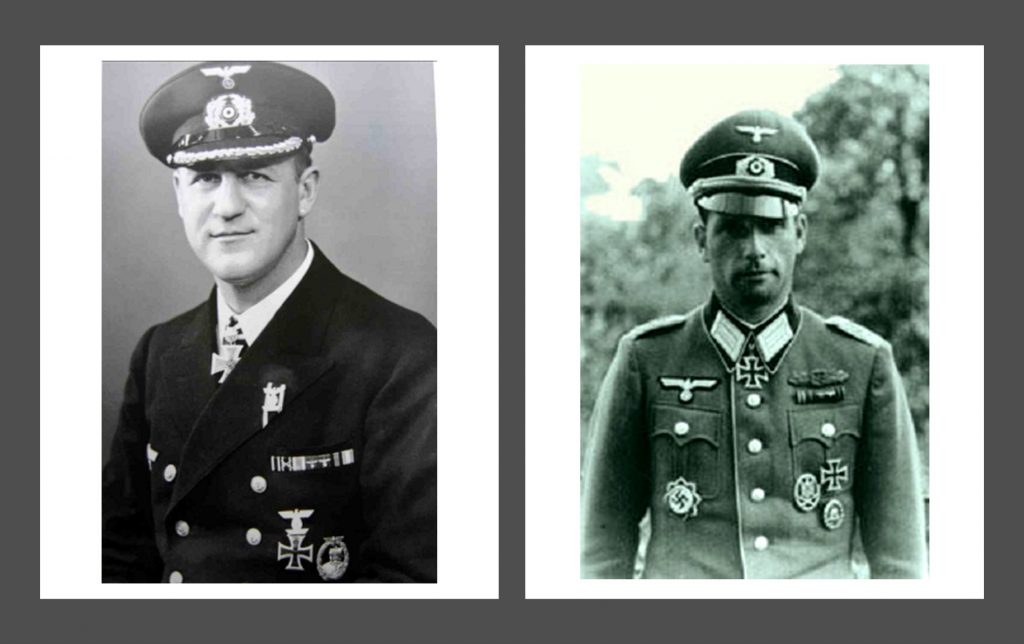
Much more serious are the accusations against Jewish bankers and industrialists who allegedly played an important role in the formation of the Nazi regime. As a rule, the same names meander from article to article: the industrialists Friedrich (“Fritz”) Mandl and Reinhold Gessner and the bankers Oscar Wassermann, Hans Privin, and Max Warburg. In what were the most prominent members of this group of five involved?
Oscar Wassermann (1869–1934) came from an old family of merchants who had settled in Bavaria. The family founded the A. E. Wassermann Bank In 1880 in their native city of Bamberg, a branch of which was opened in Berlin in 1900. In 1912 Wassermann joined the Board of Directors of the formidable Deutsche Bank, and in 1923 he became the chairman of the Board of Directors. After the Nazis came to power, he was removed from all his posts and died the following year. One of the most experienced German bankers, Wassermann was a member of numerous state institutions that regulated financial activities and was on the Board of Directors of the Reichsbank.
Another aspect of his work was his patronage of a multitude of Jewish organizations. In the 1920s, he headed the German branch of Keren Hayesod and was a member of this organization’s international Board of Directors. He worked on financial and administrative committees of the Jewish Agency for Israel (Sokhnut). The statement that such a person helped the Nazis, who had proclaimed the Jews as their main enemies, is simply ludicrous. The truth of the matter is that Hjalmar Schacht, the future Minister of the Economy, whom the Nazis appointed president of the Reichsbank in March 1933, needed the advice of such an experienced banker as Wassermann, and he remained in contact with him even after he was dismissed. Apparently, this fact was inflated to the point of his assisting and forming the Nazi regime.
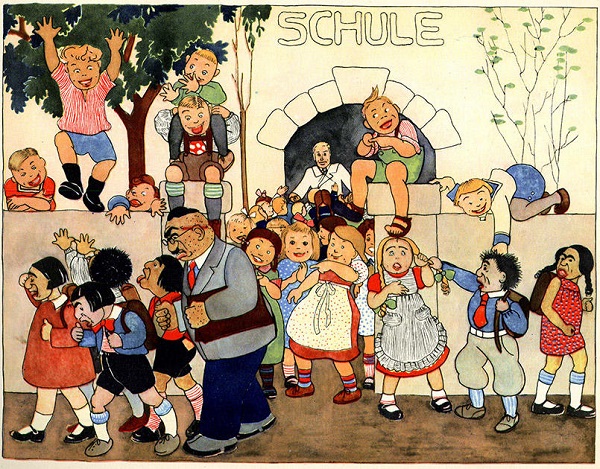
The Austrian Fritz Mandl (1900–1977) inherited his father’s company, which manufactured weapons. Mandl was an adherent of fascism in its Italian variant, and he even helped arm the Austrian nationalist paramilitary group Heimwehr. Perhaps in view of his background (his father, Alexander, was Jewish, and his mother was Catholic; Fritz was educated in the Catholic faith), the industrialist had no particular sympathy for German Nazism. Furthermore, sensing what fate had in store for Austria, he began transferring his assets to neutral Switzerland. In 1938, after the Anschluss, the Nazis began confiscating all of the magnate’s assets that he had been unable to liquidate. The businessman tried to establish business contacts with Göring’s office but apparently unsuccessfully. In 1940 Mandl left Austria for South America, returning to his homeland only after the war. Where and how he helped the Nazis is utterly unclear, barring his personal acquaintance with a number of high-ranking Nazis.
Max Moritz Warburg (1867–1946) was born into a wealthy family that owned the Hamburg bank M. M. Warburg & Co. In 1910 Max became the director of the family banking business, and during the First World War he advised German politicians, diplomats, and even Kaiser Wilhelm II on economic questions. In October 1918, he was appointed financial consultant to the chancellor of Germany, Prince Maximilian of Baden. During the Versailles Conference a year later, he advised the German delegation. In 1924 he joined the Board of Directors of the Reichsbank.
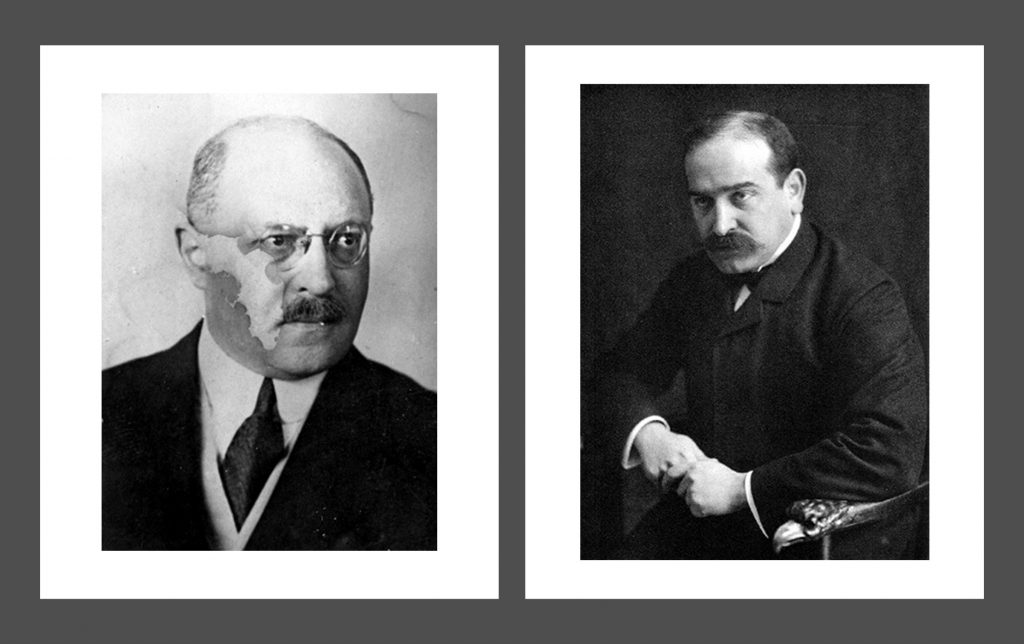
Max Warburg was a German patriot who believed that Nazism would quickly sink into oblivion. This member of Hamburg’s Jewish community never forgot his roots. During the First World War, he and his brother, Felix, tried to organize relief for Eastern European Jews. After the rise of the Nazis, he began to help German Jews immigrating to Palestine. Everything came to an end with the adoption of the Race Laws in 1935. Warburg was forced to sell his bank and flee to the United States in 1938. One of his four daughters, [Lola] Helene Nina, became famous for her role in the Kindertransport, a series of rescue efforts that brought approximately ten thousand Jewish children from Germany, Austria, Czechoslovakia, and Poland to Great Britain.
During the Nazi era, Wassermann, Warburg, and Mandl (the latter of whom never considered himself a Jew) lost a substantial portion of their assets and were forced to emigrate. If you consider this a “valuable service” to the barbaric Nazi regime, then, of course, you can mark them down as collaborators.
Indeed, inconvenient facts have never stopped antisemites, so this is not the last time that we will be hearing about Jews who supposedly brought the Nazis to power.
Veniamin Chernukhin, SPECIAL to Hadashot
Originally appeared in Russian @Hadashot.
Translated from the Russian by Marta D. Olynyk.
Edited by Peter Bejger.
NOTE: UJE does not necessarily endorse opinions expressed in articles and other materials published on its website and social media pages. Such materials are posted to promote discussion related to Ukrainian-Jewish interactions and relations. The website and social media pages will be places of information that reflect varied viewpoints.



















